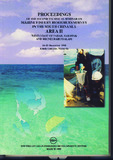Proceedings of the Second Technical Seminar on Marine Fishery Resources Survey in the South China Sea, Area II: Sarawak, Sabah and Brunei Darussalam Waters
抄録
Due to gross over-exploitation and a paucity of adequate information on fishery oceanographic, environmental and biological conditions that sustain the fisheries of the South China Seas region, the fisheries have become greatly impoverished. The deficiency in scientific intelligence has also circumscribed all attempts at substantive and tangible planning or management of fisheries throughout the region. The NAGA Oceanographic Expedition of 1959-1961, organized jointly by the United States of America, The Kingdom of Thailand and the erstwhile Republic of Vietnam, achieved pioneering oceanographic work in the Gulf of Thailand and the South China Seas. This invaluable scientific data acquisition was not pursued for a number of reasons, and thus, a holistic and dependable profile of oceanographic conditions and their seasonal variations and patterns failed to develop. Perceiving the vital importance and the deficiency of fundamental information and data for fisheries planning and management, the SEAFDEC Training Department (TD) and the Marine Fisheries Resources Development and Management Department (MFRDMD), jointly launched an inter-Department Collaborative Research program in 1995, to evaluate the fisheries resources of the South china Sea as a basal objective in the development of sustainable fisheries.
Citation
Technical Seminar on Marine Fishery Resources Survey in the South China Sea, Area II: Sarawak, Sabah and Brunei Darussalam Waters, & Southeast Asian Fisheries Development Center. (1999). Proceedings of the Second Technical Seminar on Marine Fishery Resources Survey in the South China Sea, Area II: Sarawak, Sabah and Brunei Darussalam Waters, 14-15 December 1998, Kuala Lumpur, Malaysia. Samutprakan, Thailand: Training Department, Southeast Asian Fisheries Development Center.

